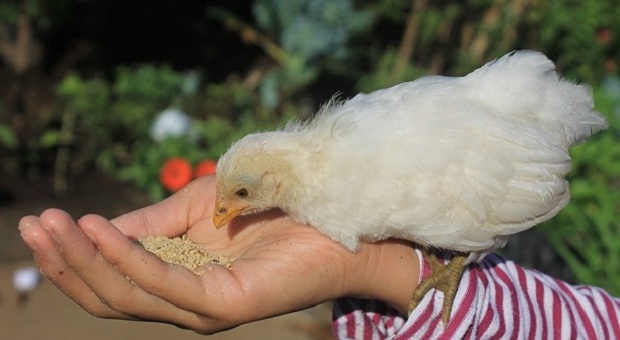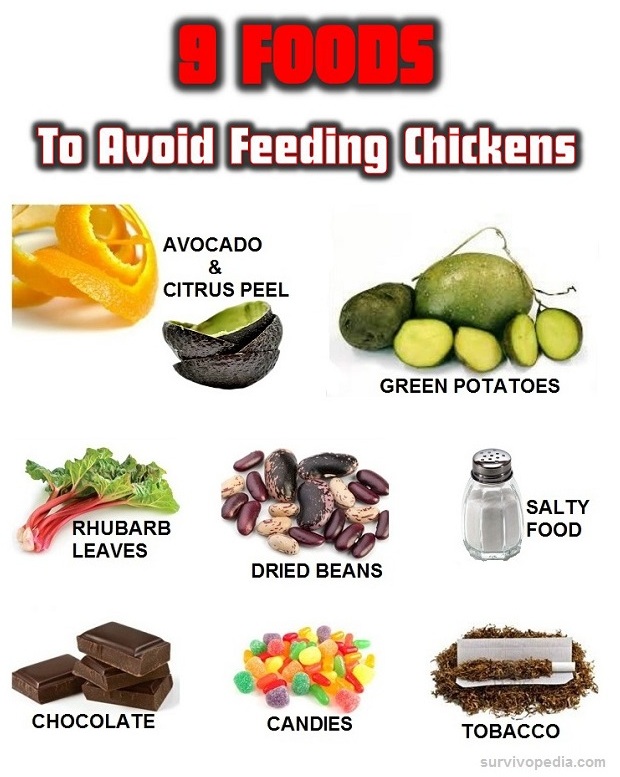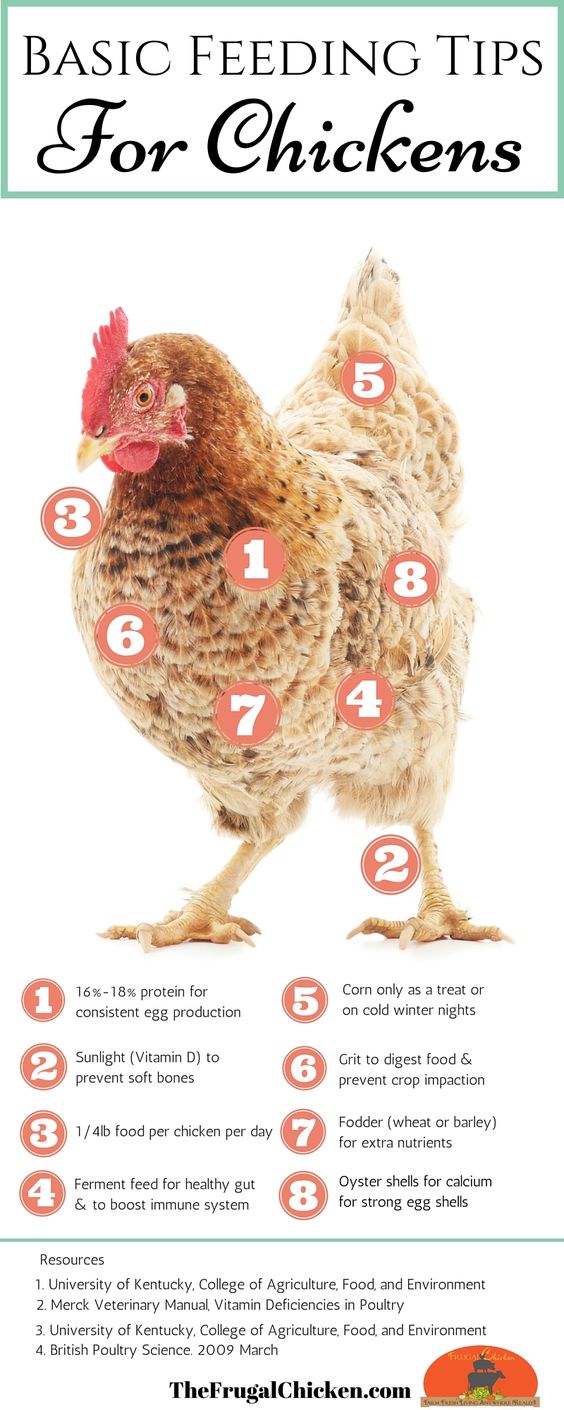Owning chickens can be an expensive venture if you rely solely on purchased feed. Obtaining the feed will also be a problem if the transportation structure is disrupted. Since this is a real possibility, at least for a short period of time such as when storms strike, you need to know how to procure cheap food for your chickens.
In addition to being ready for an emergency, most folks who raise chickens in order to get “free” eggs and meat will tell you that those eggs cost at least as much as store-bought eggs. Most of this cost is attributed to the cost of feed so if you can lower that, then it can be financially beneficial to raise chickens.
The methods and foods that we discuss today will not only help in cases of emergency; they will also help decrease your costs to feed your chickens now.
Another bonus is that you’ll know exactly what your chickens are eating, and in turn, you’ll know what YOU are eating!
Allow Them in the Compost Pile
Allowing your chickens to scratch through your compost pile will help them because they’ll peck out what they like, including bugs and worms, and they’ll also turn it for you while they’re pecking.
Feed Your Chickens Table Scraps
Chickens eat just about anything, including fruit and vegetable cuttings or scraps, egg shells, and even meat scraps. Just keep a bucket by the sink and take it to them in the evening. As a matter of fact, if you crack the eggshells into pieces that they can eat, that will provide the same calcium that they get from oyster shells.
There are a few foods that your chickens shouldn’t have, though.
Sprout Grains
Grains such as barley and hard red winter wheat, soft wheat, sunflower seeds, and oats are great for sprouting. Sprouts add extra nutrition and protein to your chickens’ diets and also make them happy, after they get used to the strangeness of it.
Most grains sprout in about 5 days and the process is simple, though it does take up some space. Spread the grains in seed trays and moisten them. Keep the layer between 1/4 and 1/2 inch deep. If you start a new tray every day for 5 days, then within 5 days, you’ll have a perpetual source of sprouted grains for your ladies.
Talk to Your Feed Store about Damaged Bags
During loading and unloading, bags often get ripped and the feed store is stuck with an unsellable product. Ask them about buying these at a discount, making sure that the bag is full enough to truly make it a deal.
Talk to Local Places for Free Food
Smoothie shops, gyms, vegetarian restaurants, co-ops, grocery stores and farmer’s markets are great places to look for scraps. Some areas have laws that prohibit restaurants and grocery stores from giving away old or damaged produce, but farmer’s markets and co-ops may be a little more willing to work with you.
If you have a local corn farmer, co-op or mill, ask them for the spillage, cracked corn leftovers, and older wheat that aren’t good for human consumption. Most will gladly give it to you for free and your chickens will be happy campers.
Let Them Till Your Garden
Once you harvest your garden, let the ladies loose to till it for you. They’ll eat the leftover plants and weeds as well as clean out the bugs.
Oh, and they’ll fertilize it for you as they go!
Free Range
Not everybody has this luxury, but if you can let your chickens wander the yard, do so. Of course, not every neighbor will appreciate it, and if you live in the country, they may be susceptible to roving bears, foxes and other critters that enjoy chicken as much as we do.
If you can’t let them free range, consider building a chicken tractor that will allow you to move their cage over the yard so that they can have access to fresh grass, bugs, and insects.
Feed Grass Clippings, Raked Leaves, and Garden Weeds
Your girls will love picking through the grass clippings and garden weeds and it’s a free source of nutrition. That fresh grass will help with nice, yellow yolks and the raked leaves make good cover for worms that they can peck for after it rains.
Feed Leftover Milk and Whey
If you have a milk cow, you’re likely drowning in milk unless you have a large family or are selling it.
Use some of that leftover milk for your chickens. It’s a decent protein source and if you allow to clabber a bit, you’ll give them an extra boost of probiotics which will help with their immune systems.
Cull Your Flock
Yes, it’s one of the harder parts of growing chickens, but if a hen has greatly reduced egg production or is declining, it’s best to turn her into a nutritious soup instead of letting her wander around and eat without producing.
Grow Duckweed, Comfrey and Azola
Duckweed an Azola are water plants that are high in protein and vitamins, and your chickens will love them! You can grow them in a pond or a fish tank, though you won’t yield much in a tank.
Comfrey is an herb that grows on land and has several different medicinal uses, including making a great tea. It’s packed with protein for your girls, so it’s a great multi-use plant to have around.
Sell Your Eggs
Seems like a no-brainer and isn’t actually a way to create cheaper feed but now, in the real world, you can use the egg money to buy feed. If SHTF, you can trade the eggs for grain or other items that you need.
Ferment Your Feed
Fermenting your feed is much like processing the wheats used to make beer, minus the sugar. You wet it down and let it ferment. Fermenting your feed adds protein and probiotics and makes it easier to digest.
The probiotics help boost your chickens’ immune systems and a healthy chicken is a happy, productive chicken! An added bonus is that fermenting actually produces a pre-fertilized seed (if you use seeds) once it’s made its way from one end of your chicken to the other!
You can ferment your current food or use grains. Either way, this is how to do it:
- Place the food in a quart jar or a plastic container with a lid (gallon or 5-gallon buckets are great). Don’t use metal. Your container size will depend upon how many chickens you have because you’re going to put 3-5 days’ worth of feed in it.
- After you put the feed in the container, cover it with water so that there’s at least an inch of water above the top of the feed. Since the grain or feed will absorb the water, check it after a day or so and add more water if necessary. The layer of water helps keep it from molding.
- The next day, do the same thing in a new container, and start a new one for a total of 5 days. Cover them with a towel or loose lid.
- On day 4, feed the first batch to your girls an start a new batch in that container.
An alternative is to just make one big batch and keep adding water and grain to it as you feed it. Since we only have a few chickens, the jars work best for us.
Grow Fodder
Growing fodder takes sprouting a step further. You actually grow the grass from the sprout until it’s a few inches tall, then feed the whole thing to your girls. They get the benefits of the grass, the seed and the roots, so it’s an extremely delicious and nutritious way to stretch your grain. You’ll get about 25 pounds of fodder from 5 pounds of grain and it only takes a few days.
Spread the seeds in a 1/4-1/2 layer in a pan with holes in it. You can build a stacking system using some PVC pipe so that you can water from the top and let it drain down through a few layers into a catch pan. Of course, you can use just the sprouts, too!
Did we miss anything about feeding your chickens on a budget? Do you know some old ways to feed the chicken healthy that we haven’t heard about?
If you have other ideas or want to share your knowledge, please do it in the comment section below!
This article has been written by Theresa Crouse for Survivopedia.












Billy Hill | May 19, 2016
|
Good article. Only suggestion I would make is to crush the egg shells before feeding it to the girls. It does not take long for them to connect the dots of where those yummy egg shells come from and you could risk inadvertently teaching them to eat their own eggs.
Billy hill | May 19, 2016
|
Another nice treat for my girls… I free range them 4 to 6 days a week. This year in So Cal the earwigs have been, well, plentiful! I have some potatoes growing in a trash can with wheels on it so I can move it. The girls always come running when they see me moving things because there’s usually scores of earwigs and rollie-pollies for them to gobble up. There are holes in the bottom of the can for moisture to flow and it keeps the ground very enticing for the little snacks.
Billy hill | May 19, 2016
|
Ok, last reply on this I promise! I also have half a dozen large scrub oaks in my back yard. I sweep the leaves off the deck into a pile on the ground and let it start composting. The girls go bonkers scratching through it to get the bugs. I keep it watered every few days and rake it back up into a pile when they finish decimating it. They’re more active digging in the leaves when it’s dry and there’s not much green growing in the yard.
Danfire | May 21, 2016
|
When she mentioned eggshells, she did suggest breaking them into pieces 🙂
Gale Jenness | June 29, 2020
|
I feed my chickens their egg shells, but to keep the chicken from eating their eggs you need to cook the eggs shells in the over just enough to dry them out well or light brown the shell. Then I grind the egg shells up in my Ninja food processor or vitamin if I want the shells turned to almost a powder! I have yet to have any problems with my chickens trying to eat any of their eggs in a little over a year they been laying eggs now. I believe cooking the shell changes the taste just enough the chicken don’t realize their eating their egg shells?
Dana | May 19, 2016
|
Plant a bag of bird seed in a patch or on a slope. It grows into a great feed lot.
Nance Shaw | May 19, 2016
|
We killed the raccoon that was killing our chickens. then we fed it to the hens.
Someone online suggested putting the killed critter in a bucket, after drilling some 3/8 inch holes in the bucket sides, then hang it in a tree. This allows flies to harvest the critter and lay eggs. Only 2 or three days later maggots start coming out the holes. The chickens LOVED the maggots. WE did not love the smell of the rotting critter, so this is not solution for the back yard, but it IS great free food and excellent protein.
Ron H | May 19, 2016
|
I live in an area that grows a LOT of wheat. Every year when the wheat is harvested there is always some that must be dumped outside the grain elevator because it has gotten too wet to be stored with other wheat in the elevator. Is this wheat a good product for feeding to chickens? Can this wheat be used in the fermenting process as described in the article? Should it be combined with something else?
Nance Shaw | May 19, 2016
|
Yes and yes. Have fed them wheat on the stalk, wet or dry for years. Good feed.
Sally | June 20, 2016
|
I have some extra organic wheat berries….would it be safe to feed those, just as they are, to the chickens or should I crush them? Could they be fermented as you describe above?
Thanks.
Russell Palmer | June 21, 2016
|
They also love fish. Whatever you catch, if you don’t want to eat it, just take it home and give it to your chickens. Either open it up with a knife, or you can chop it with a weed cutter like a hoe with a straight blade.
Sally | June 21, 2016
|
Except eels. They are too tough even for several chickens working on it.
Russell Palmer | June 21, 2016
|
The eels should be good to eat. f you catch eels, you could also grind them up, or chop them with a knife/machete, to get them in small enough pieces, as chickens can swallow fair sized items.
Sharon | November 18, 2018
|
Raw fish I assume?
Paul | May 19, 2016
|
The best source of protein and fat for chickens is what they evolved to eat, which is bugs and other creepy crawlies. As such, raising crickets or meal worms or black soldier fly larvae for your chickens will improve their overall health, giving you better eggs and meat. Raising such critters is cheaper and easier than many might think, and they require very little space. Plus your birds will adore you for it. Here’s part one of a great Youtube series on black soldier fly larvae:
Jimi | May 22, 2016
|
You website to the you tube wedsite to harvest bugs is a no go.
Russell Palmer | June 12, 2016
|
I pulled up the web and it was fine. The guy talked a lot about his history, etc. but sometimes you just have to weed out some things. It tells a lot about the benefits of the Black Fly Grubs, (maggots,) for feed and cleaning the garbage deposits. B|
cher knapp | May 20, 2016
|
can I feed my meat birds coffee grounds that get mixed in my compost
Quarteracrehome | May 25, 2016
|
No! Coffee has the same chemical reaction in the brain as chocolate. It’s the caffeine and theobromine found in both that’s bad. Caffeinated plants and beverages, in fact ANY psychoactive chemicals, should be avoided in all animals. But the theobromine makes it extra toxic.
https://en.wikipedia.org/wiki/Theobromine
The human body is surprisingly resilient to these toxins but most animals are not, and lethal dosage is based on body weight. Mostly chickens know to avoid these things, but not always. Chickens are extremely light animals so it takes VERY little of these chemicals to kill them, same with dogs, etc. which is why Chocolate (which DOES contain some 10Xs more theobromine than coffee) on almost every toxic to animals list in the world.
Danfire | May 21, 2016
|
What about sourdough starter discard?
Pingback:14 Cheap Ways To Feed Your Chickens | NewZSentinel | May 22, 2016
|
Frank Costa | May 30, 2016
|
We’ve pampered our chickens for years. In winter, we soak a feeder pan of alfalfa blocks (filched from the horses) with hot water. The chicks love the ‘green tea’ and they gobble up the alfalfa like the treat it is. All year, we add 1/4 cup of apple cider vinegar to each 3 gallon waterer we fill. They love the taste, so they drink more. This makes it easier for them to form eggs. The vinegar helps them to get more out of the foods they eat, and creates a less wholesome environment for the internal parasites that they ingest.
Pingback:Here's The Right Way To Build A Chicken Coop! | Survivopedia | June 12, 2016
|
Pingback:Here’s The Right Way To Build A Chicken Coop! | Prepper's Survival Homestead | June 12, 2016
|
Pingback:Here’s The Right Way To Build A Chicken Coop! | | disasterdefense.us | June 12, 2016
|
Pingback:Basic Survival Food From Your Garden: Corn | | disasterdefense.us | June 24, 2016
|
Pingback:Prepper Project: 5 Ways To Build A Chicken Incubator | Prepper's Survival Homestead | July 7, 2016
|
Pingback:Prepper Project: 5 Ways To Build A Chicken Incubator | | disasterdefense.us | July 7, 2016
|
Pingback:DIY Winter Water Heaters For Chicken Coop | Survivopedia | January 6, 2017
|
Pingback:Choosing Chickens for Eggs and Meat | Survivopedia | July 7, 2017
|
Pingback:Prepper Project: 5 Ways To Build A Chicken Incubator | Survivopedia | September 18, 2017
|
Pingback:How To Help Your Chickens Through Molting | Survivopedia | September 24, 2017
|
Pingback:3 Ways To Add A Rooster To Your Flock | Survivopedia | July 2, 2018
|
Pingback:What You Need to Do for Your Livestock This Fall | Survivopedia | August 22, 2018
|
Gale Jenness | June 29, 2020
|
I must have some of the most pickiest Chickens in the whole wide world when it comes to eating grains. They don’t seem to like any of the white grains at all. They like their sunflowers seed, little corn but I try not to feed them much corn! They don’t like wheat. I bought a bag of scratch see if they eat it and not much luck there either! I have a large metal garbage can set up with 4-3” elbows for the chickens to eat out of in their coop. They dig out a lot of the grains I have mixed in and just drop it on the floor till they get what they want to eat in the garbage can and leave the rest laying on the floor. Trying to figure out a good healthy recipe of grains or whatever else I can throw into the recipe to give my girls the proper amount of protein. But not having much luck so far finding what my chicken want to eat? I do let them free range some, but it’s a limited amount of time due to predators running around to deal with too. Just want to keep my chickens healthy and happy! Not sure I’m succeeding though? Any help with recipes is always gladly welcomed
Sally Farrar | June 30, 2020
|
I’m the same way with my chickens as I am about my children: if they get hungry enough, they’ll eat it.